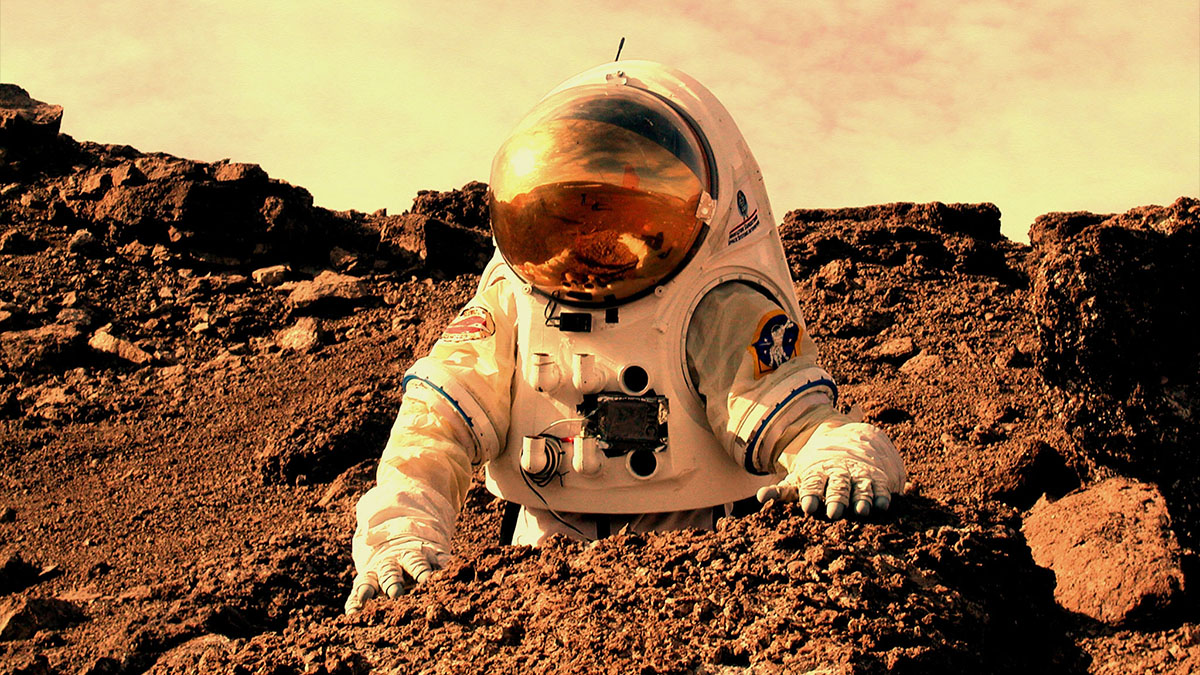why we’re not ready for mars just yet

Space.com decided to ask a microbiologist how long we have to wait until humans finally set foot on Mars to turn decades of dreams into reality. His answer? We could go to the Red Planet today if it wasn’t for political considerations and high upfront costs; any technological or medical limitation will be met during the planning process. While his optimism may be refreshing to those of us who dream of interplanetary travel, the problem is that we’re just starting to develop the kind of technology we’ll need to to make travel to Mars possible and it will be at least a decade before we can start putting the pieces together and planning a real mission.
The first problem is propulsion. Current rockets will take six months to ferry astronauts across the planetary divide and leave them exposed to a large dose of radiation. Trying to mop up radioactive particles out of their system with specialized drugs will still place them at very significant risk for cancers and radiation poisoning. On the other hand, plasma rockets which are approaching the level of performance necessary to be used for space travel, could get spacecraft to Mars much faster and the magnetic fields they’ll generate would protect both the astronauts and the spacecraft along the way. Why should we put crews at risk to do something now rather than take some time to make sure we can do the same thing much faster and far safer?
The second issue is the size constraint for our spacecraft. According to our microbiologist, having an 8 meter wide capsule as a Martian habitat for 500 days would be just fine. Really? That’s about 540 square feet which is supposed to accommodate about five or six people. Can you imagine being trapped millions and millions of miles from home, sitting in a tiny capsule with strangers and zero privacy for 500 days plus a year in travel time? Tempers will flare, people will get homesick and someone is bound to go stir crazy. When you say that a small capsule will do just fine for two and a half years, you’ve ignored a lot of issues that need to be taken into consideration. We’ll need to create the systems capable of landing much bigger and roomier habitats on the Red Planet to give astronauts a chance to spread out. With space, privacy and creature comforts, the crew will have an easier time carrying out their mission and dealing with each other. Of course the big problem is how exactly we would slow down something roughly the size and weight of a house from a few tens of thousands kilometers per hour to just one or two in roughly seven minutes…
The third issue has been mentioned before, but it needs to be repeated. The cost. Spending billions on a trip to Mars just to plant a flag and take some pictures doesn’t really accomplish anything but make people raise questions as to why we went there and whether we can get anything practical from a trip to another world. We need to establish a long term scientific plan and prepare an entire infrastructure to support it. Furthermore, we should take into account the sheer amount of damage we’re willing to let astronauts take when going to other planets. Human bodies evolved in a thick, nitrogen and oxygen rich atmosphere with a 1G gravity. To take that away, then suddenly replace it with 0.33G while having them bombarded with significant amounts of cosmic rays for two and a half years would affect bones, the circulatory and immune systems, and have an enormous impact on their quality of life when they get back. Ideally, with propulsion that gets them to Mars and back fast enough to put them on a more humane time schedule regardless of the planets’ orbits, we’d be able to land on Mars more often and keep crews safer.
If we really want to set foot on Mars, we can’t just leave problems for engineers to fix and say that we could go there now if we really wanted to. We need new propulsion systems, the ability to land a large, suitably strong habitat with enough working and private space to make astronauts feel comfortable, and we’d need to have a plan for exploration on a time schedule that would help them deal with the rigors of an alien world. It may take a while longer before we turn science fiction into science fact, but if we do it right instead of just doing it for the sake of being able to say we did it, we’d get a lot more out of these missions.





